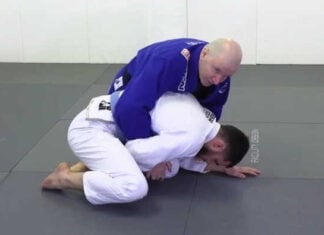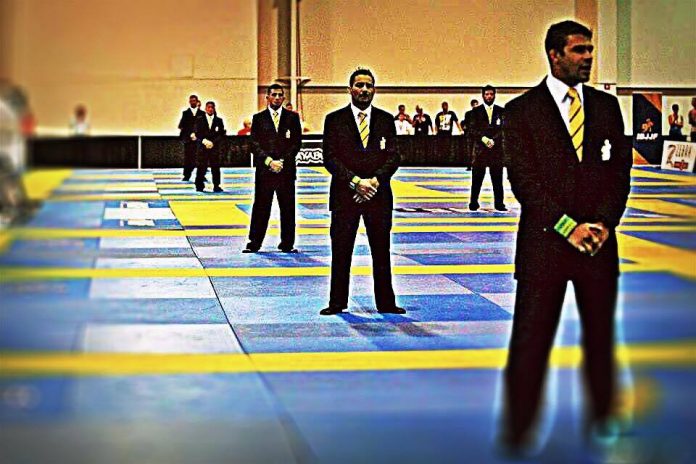
Being a BJJ referee is a hard business. I can attest to that myself. That said, once you go and referee a match or an entire tournament, you’ll understand how important it is to know all the little rules and regulations. Тo that extent, it was baffling for me how many people have no idea what the referee’s gestures or commands are. Ther are not that many, to be honest, and one glance through the rulebook of any organization would be sufficient to be up to speed. However, for anyone looking for a shortcut, and less technical ways of explaining, let me clear up some of the most common ones.
There’s nothing mysterious about what а BJJ referee gestures or says. It all has to do with what\s going on in a match. However, most competitors do not know what a referee is doing, apart from the point gestures. While you’re fighting, this is not that important, as the only time you need to be paying attention to referee gestures is when you’re not engaged in a match with an opponent. However, you need a counter that knows what referees are doing, in order to be able to act quickly and accordingly.
The Ungrateful Task Of BJJ Referees
Being a BJJ referee is anything but easy. God knows I’ve said some bad stuff about refs throughout the years. Who hasn’t? It took me stepping on the other side, or in this case, in the middle of the mat, to understand how big of a task it is to referee a Brazilian Jiu-Jitsu match. Referees have to think about everything and watch everything. It is much harder than you might think to try and get things right while enforcing the rules at the same time. And of course, mistakes are bound to happen, which doesn’t go well with competitors.
That said, the case of the BJJ referee is not helped at all by the lack of knowledge of the rules. It is not just that people do not want to learn the gestures and commands of the referee. The rulebooks are also written in a way that’s repulsive to read and often hardtop comprehend. It took me ages to figure out what every little thing in there was actually about. Certain stuff remains a mystery even to referees themselves, which is probably why they have the right to call things as they see them. In fact, the very first sentence in the IBJJF rulebook is that the referee’s decision is final.
That said, let’s not just shift all the blame to the referees. I know I never will again. However, there’s a huge caveat to learning the rules- you know how to get around them. Learning the gestures and commands can help you be a better cornerman for your teammates as well as figure out things on the fly when you’re fighting. Here’s a shortcut to the most important ones in the rulebooks.
BJJ Referee Hand Gestures
Let’s make things simple from the beginning. There are only 12 gestures that referees make outside of awarding points (3 gestures for points). All in all that’s just 15 gestures you need to learn. In order to make understanding them easier, we devised a simple structure by dividing them into categories.
Points And Advantages
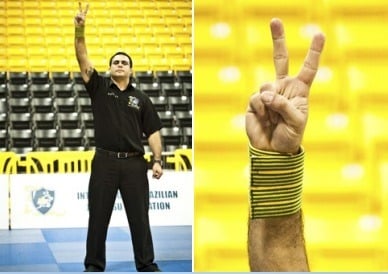
Advantages are even simpler. Every time the referee has an arm stretched to the side, with the palm facing the mat, an advantage goes to the athlete the arm corresponds to. Probably the easiest of the BJJ referee hand gestures.
Warnings And Penalties
These are arguably the most important BJ Jreferee gesture you’ll need to learn. Penalties usually refer to negative points, which you can “earn” in several different ways. One is to amass three penalties. Another is to intentionally try and leave the area while escaping form a move. Thre are many more examples. the take away here is that some penalties you can get away with, while others might cost you a match. So be mindful about what the referee is signaling, because sometimes you won’t’ even know you’ve made a mistake. `
Stay In Area
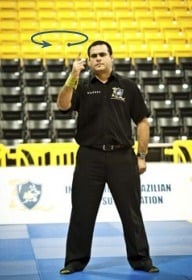
Point Deduction

Penalty
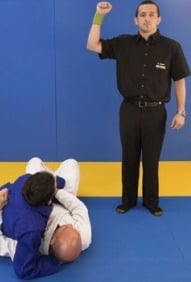
Disqualification

Directions
This is the largest category of BJJ referee gestures. Here there are basics that you might take for granted, but may come off as disrespecting and disobeying a referee if you do not know them. That’s certainly not something you want to do to a BJJ referee, regardless of organization or ruleset.
-
Enter Area

-
Start Of Match

-
End Of Match / Pause

-
Adjust Gi

-
Adjust Belt

-
Stand Up

-
Return To Ground
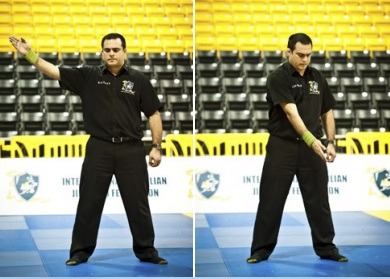
The Essential BJJ Referee Commands
IN addition to the gestures that a BJ Jreferee uses to control the match and let those that work the table about points, advantages, and penalties, they also use certain verbal commands. In fact, they only use a few, which, surprise, surprise, are in Portuguese. The exact number of verbal commands here is 4, and they’re not at all hard to remember.
Combate – Plain and simple, this means to start a match. Both at the beginning of a match and at every restart that might take place the BJJ referee will use this verbal command in addition to the appropriate hand gesture. In this situation, it would be the signal to start a match.
Parou – Probably one you ‘ll hear most often. This refers to stop any and all actions. it corresponds with the stop/pause hand gesture. Accordingly, it means that you should stop what you’re doing and look at the referee. It may be the actual end of a match or just a situation that merits a restart in a different area of the mats.
Lute - This means “fight”, freely translated. It is something a referee uses when trying to signal one athlete to work more, rather than stall. A BJJ referee can either point to the athlete in question or touch their shoulder to cleary signal which athlete is in question. A penalty gesture usually follows this verbal command.
Falta – This one is used once again in situations of penalties. However, this verbal command is only used when there’s a serious foul, which in most cases, is grounds for an immediate DQ. Still, once again the referee either points to the chest of an athlete. or touches their shoulder, along with the verbal command. This is oen you do not want to hear aimed at you while you’re grappling.
Final Thoughts
As I said, understanding the BJJ referee hand gestures and verbal commands will make you both a better competitor and a better cornerman. After all, if you’re competing, you have to compete by the rules. Why not know exactly what’s going on, rather than trying to figure it out on the go? Moreover, you’ll save yourself valuable time arguing pointlessly with the referee after the fact. Remember, the rulebook is designed to protect a BJJ referee and their decisions. It is better to know what you’re doing and avoid all the confusion!















